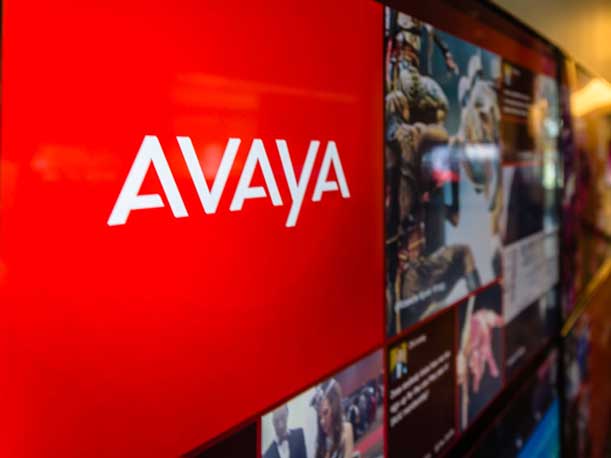Avaya CEO Alan Masarek On Financial, Business Restructuring And Customer Experience As its ‘North Star’
‘Having gotten this financial restructuring completely behind us with extraordinary results where we now have a genuine financial strength so that we can focus completely on business strategy and business realignment — that’s the fun part,’ Avaya’s CEO Alan Masarek tells CRN.

Avaya Ready To Re-ENGAGE
After emerging from bankruptcy last month, Avaya CEO Alan Masarek wants partners and customers to know that it’s back and open for business.
The unified communications giant’s journey back to financial health wasn’t easy and didn’t happen overnight. Avaya in February filed for Chapter 11 bankruptcy protection after months of speculation of a bankruptcy declaration following the company’s cloud subscription accounting problems. The company went through not only financial restructuring, but also a business realignment, which is still in the works, according to Masarek.
The company’s CEO, who was brought on last summer, explained that the “thesis” that Avaya was working with when he joined was that it had one of the biggest – if not the biggest – install base of UC customers globally. How could the company take advantage of that gigantic customer base by helping these enterprises, government agencies, and SMBs, move to a customer experience platform? Enter the Avaya Experience Platform, a cloud-based Contact Center as a Service (CCaaS) and collaboration offering that allows customers and partners to add on new communication features as they go. And it’s the platform that Avaya is using to reposition itself as a leader in the customer experience market.
Avaya CEO Masarek sat down with CRN to talk business updates since the company has emerged from bankruptcy and what partners can expect on its transformation journey. Here’s what Masarek had to say.

Tell us about the two restructuring efforts — financial and business — that Avaya has been going through the first half of this year?
There’s been two big restructuring efforts. There was a financial restructuring and then the business restructuring, which is all about product strategy, go to market and organizational alignment. The financial restructuring is done, so it’s in the rearview mirror. And we got pretty extraordinary results. We did it through the Chapter 11 process in what is called pre-packaged, pre-established, fully pre-negotiated, meaning all the negotiation with the lenders happened before you presented it to the courts, there’s no one to oppose it, because everybody who is going to be impacted is a signator of it. The result was we got over $4 billion of either debt relief or new capital to completely recapitalize the company. The actual mechanics of it is we had just shy of $4 billion of debt if that was written down to $150 million and then the same group of investors and lenders invested $650 million more, in fresh capital, into the company. That plan was fully confirmed 35 days later on March 22, and [that] meant the bankruptcy was done. It was very quick, but we formally emerged at the beginning of May. We moved from relative financial weakness before to now genuine financial strength, it’s to the point that I’m not sure there’s anybody’s balance sheet I would trade places with. Think about it this way: we now have a balance sheet and capital structure that gives us strength and enables us to go on offense.
While that was going on, concurrently, we [had] a business restructuring, which was resetting our product strategy. The way I like to describe it is the macro trend that we all live in is software solutions, like contact center, are all moving towards customer experience. So, I like I like to think of our strength in contact center, where we’re the largest in the world and contact center. Contact Center is sort of the heart, lung and liver of customer experience and puts us in a very favorable position. One out of every three [contact center] agents on the planet uses Avaya. In fact, the thesis when I joined was around how do you take this extraordinary asset base called Avaya — the biggest in the world in these important categories around UC and CC, and realizing that megatrend on customer experience, how do you reposition yourself to be successful in that space? The reason investors and lenders gave us over $4 billion through debt forgiveness, or $650 million in new capital, is because they believe in the business. We believe in the opportunity that we sort of sit in a pole position to do very well on this enormous [total addressable market] TAM called customer experience. That was the thesis.

You’ve said that Avaya is poised for transformation. What steps has the company taken to work toward that transformation post-bankruptcy?
From a product strategy point of view, we set our North Star around what we now refer to as the Avaya Experience Platform. We have rationalized a bunch of the old stuff, through end of life, end of sale and end of support decisions. That’s enabled us to focus the engineering group by virtue of focus on fewer initiatives. They are burning roadmap really quickly. We’ve also been very transparent about the roadmap because my view is the story is excellent, so might as well be transparent and vocal. So, showing people what we’re doing and then being reliable. So, if I tell you, we’re going to do 10 features in the quarter, my goodness, you can take that to the bank.
Being transparent on the one hand and reliable on the other, you do that a couple quarters in a row, trust develops. We’ve taken that new product strategy and paired it with a go to market strategy. The value prop is something we call: “innovation without disruption.” At its simplest, we have this extraordinary customer base. That customer base is on some level of cloud journey. The smaller companies might be going directly to the public cloud. But for the biggest companies, healthcare institutions and governmental agencies in the world, the cloud journey is much more slow and gradual and typically deliberate because of the risk of ripping out that very mature plumbing that’s bespoke throughout their environment — they don’t want to do that. But by same token, they want to bring functionality beyond just voice, chat, social, digital, so it’s hybrid. It’s basically bringing the chat, social, digital, and other features like that, pulled from the Experience Platform, paired with the premise voice, which we don’t rip out. So, you get the innovation without the disruption. You can modernize, you can innovate, without taking a risk of ripping this very battle tested bulletproof infrastructure. We’re re-releasing the [AXP] brand at ENGAGE. It’s about: Choose your journey. It’s all about choice. “Mrs. customer, you can stay on-prem, you can move all the way to multi-tenancy cloud. Or you can take the baby steps in between where you keep the prem infrastructure It’s up to you, choose your journey. And if you compare that competitors who either only provide the multi-tenanted solution, or those competitors who have both prem[ise] and cloud, but one very notably has deemphasized prem, stating that they won’t support single instance or dedicated instance cloud, and they’re pushing everybody to the cloud — to the multitalented solution. For these very large customers that we are over indexed to, that is not what they want. They want to go more gradually because it avoids the risk of disruption.

How have you had to change things internally to get the team to embrace cloud selling?
If you go back to the original RingCentral deal in 2019 — that was the first time Avaya had a cloud product: ACO. And with that came a meaningful presence within the master [agent] channel. We’ve now added to that AXP, now also sold through agents. So, one of the issues is that 70 percent of what we sell, globally goes through some sort of third-party distribution — Vars, distys and increasingly, agents. So that’s new to the company over the last four years. And that’s scaling really, really quickly. And by the same token, the VARs out there are shifting their focus to cloud because if they don’t, they’re going to get left behind. We’ve had to do a great deal of just educating our own sales force, bringing in folks who are sort of born in the cloud salespeople to educate from within. Before ENGAGE, we’re actually doing a sales kickoff that we do once a year for teaching, enabling and communicating.

How important will technology partnerships be as part of Avaya’s roadmap?
Partnerships are very important to us. We have product relationships and then we have pure technology relationships. The product ones; perfect example would be Nuance, which is owned by Microsoft, which is natural language understanding because that uses AI technology so that you can take a voice interaction, it gets transcribed with metadata, and even though the voice interaction is analog, it gets reduced to digital, and it’s searchable and presentable to the agent, no different than an email stream or social stream. Those are products that we continue to sell to our customers as part of bundles. Then there’s the technology side. AI is becoming very, very significant in what we do because so much of the AI functionality is third-party. So, whether it’s ChatGPT [or] Google CCI, there’s literally hundreds of them, what you’re finding is that all this super important new technology is really influencing the customer experience space. It’s quickly becoming table stakes. My view is the reason that we will be successful is like for most software companies, most kind of winning propositions when you’re selling software is the package. So, it’s the software, which incorporates the third-party platforms around AI, it’s the support, it’s for us, the hardware, it’s the services side as well. If you’re on that cloud journey, I’ve been with you for a long time. I helped create all the bespoke call flows, [so] who better as you go down the cloud path to help you migrate to cloud at your pace? It’s the package that will win the day. And that package is ever more relevant to a base customer.

You’re coming up on almost a year as Avaya’s CEO. What are you most proud of and what do you want partners to know?
What I’m happiest about is that the thesis is working. I’ve done these transformations in the past and it almost always comes down to resetting your product strategy, realigning your go to market, resetting your organization in support of that strategy, and revitalizing the culture. What I’m happy about is that is happening big time and we have a great deal of work to do. But even in the midst of a tremendous amount of financial noise and such, I’m really proud of this organization that I think is very effectively turning the page towards the future. There’s a clear belief of the opportunity to win. And people are executing well, on behalf of that. I always say, there’s always lots of work to do. We’ve always got to execute. That’s why we come to work in the morning. And we certainly do. But now having gotten this financial restructuring completely behind us with extraordinary results where we now have a genuine financial strength so that we can focus completely on business strategy and business realignment — that’s the fun part. I think the message coming out of Engage is Avaya is back and the future is way, way brighter than in the recent past.
We’re back and here to stay and we’re providing the innovation that [us and our] collective customers with partners need. Customers don’t want [rip and replace] because it creates enormous disruption because we are so integral in their world — who wants to rip that out? And so, the partners are super important to us, whether it’s an agent, or a VAR, or a disty, or some sort of SP — there are different models around the world, and we’re going to continue to invest in the partner channel, working with them to reach the downstream customers around the globe in 170 countries around the world. Revenues throughout the world, in aggregate, are close to a little more than 70 percent is happening through one of those levels of indirect distribution. The cloud side, interestingly, is a little higher.